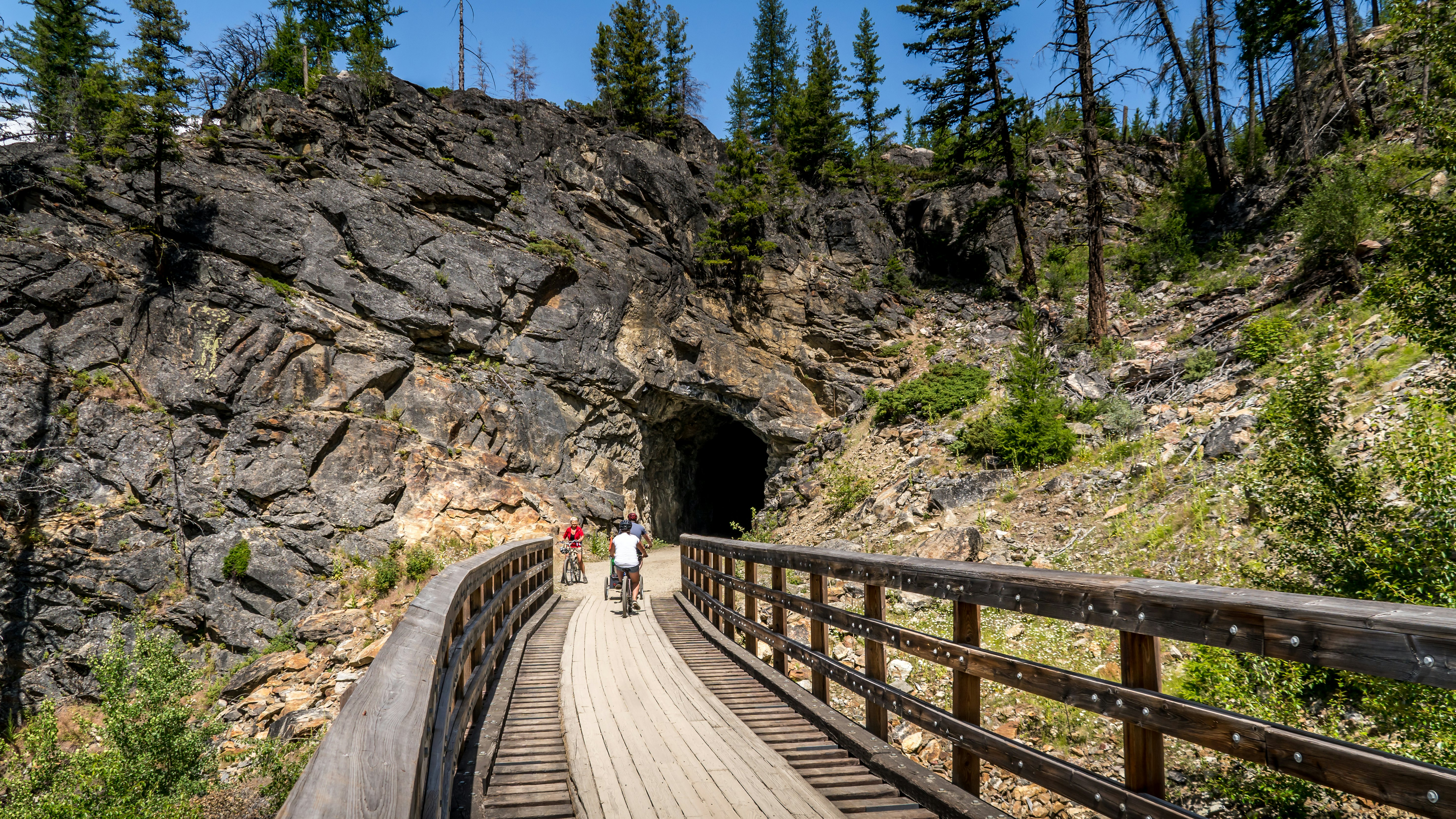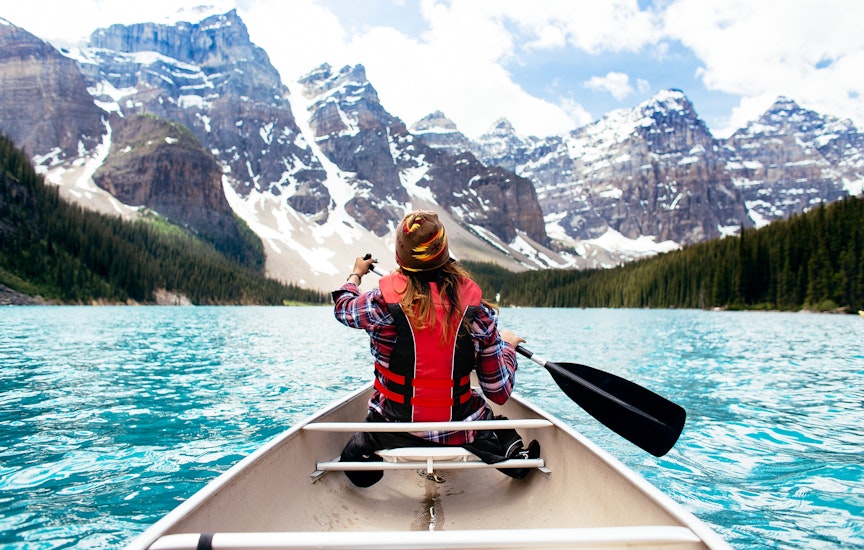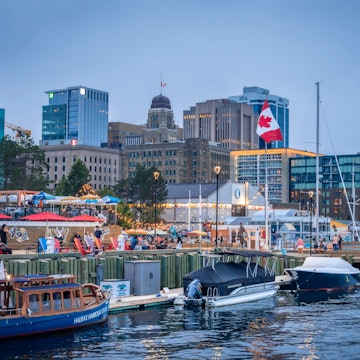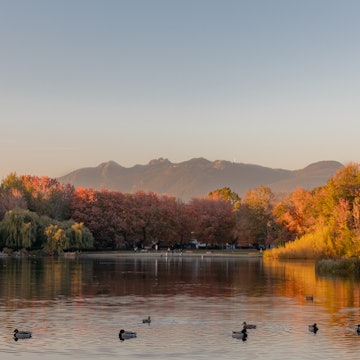

Osoyoos in the Okanagan Valley of British Columbia, Canada. Nalidsa/Shutterstock
Snow-dusted mountain ranges and dense ocean-flanked rainforest are scenes that spring to mind when picturing British Columbia, but the Okanagan Valley doesn’t fit into either category. Far from it, in fact.
Its southern portion near the border with Washington is an arid tumbleweed-strewn plain in parts and home to Canada’s only desert, while further north the 135km-long Okanagan Lake is flanked by more than 180 wineries, mountain foothill trails, luxury resorts and some of BC’s most distinct wildlife.
Here’s a guide for first-time visitors to a unique corner of Canada.

When should I go to the Okanagan Valley?
British Columbia’s climate is famously mild compared to the rest of Canada, though it’s still best to avoid visiting in winter as temperatures hover around freezing and driving won’t be much fun.
The Okanagan Valley’s dry landscape receives over 2000 hours of sunshine per year, which partially explains its good wine-growing conditions. The summer and fall months are best for visiting overall. Summer is good for lake activities and sitting outdoors at wineries, while fall brings a blur of orange and gold colors, warm days and cool evenings. Accommodations are a bit quieter, too, making bookings easier.
Summers in Osoyoos can reach around 35°C, so make sure to bring plenty of sun protection if visiting anytime between July and August.


How much time should I spend in the Okanagan Valley?
Consider spending a solid week in the Okanagan Valley to make the most of its varied landscapes and leisurely winery hopping. The region’s biggest city is Kelowna. It’s worth spending a couple of days there first before heading out into the wider valley.
Some wineries offer on-site accommodation, so you may want to plan parts of your journey around those. There are also plenty of resorts, lodges and cabins along the way, depending on how you want to tailor your trip.
Is it easy to get in and around the Okanagan Valley?
Kelowna International Airport is about a 40-minute flight from Vancouver and closer to an hour from Calgary. The drive from Vancouver to either Kelowna or Osoyoos is just over 4 hours and passes through some majestic scenery. If driving, consider spending an ethereal night amid the mist-strewn cedar and maple forests of Harrison Hot Springs.
Once in the valley itself, hiring a car is the best way to explore the area and will allow the most freedom. There is public transit in Kelowna with several bus services, but anywhere beyond that a car is the most prudent option.

Top things to do in the Okanagan Valley
Go in search of wine
Often characterized by the sweet ice wine from the frigid grapes lining Ontario’s Niagara Peninsula, Canadian wine has spread its wings west – 186 of the 341 licensed wineries in British Columbia are found in the Okanagan Valley.
Whether visiting quaint family-run operations like Little Straw Vineyards in Kelowna or slick ultra-modern estates like Phantom Creek in Oliver, there are several ways to get a fill of BC’s best wine. Dropping by is fine, but booked tasting experiences are a fun and convivial way to learn about local varietals and the Okanagan’s unique climate.
Though hidden away off the Okanagan Highway, the circular District Wine Village is arguably the most direct way of getting to know the region. Nine wineries, a brewery and a distillery form a modern halo of al-fresco sipping under the sun.

Explore a desert landscape
The landscape in Osoyoos isn’t like other parts of Canada. The hottest and driest part of the Great White North, its desert-like shrub steppe that carpets the southern portion of the Okanagan Valley is especially strange to behold after driving east through BC’s rainforests. The Osoyoos also contain flora and fauna found nowhere else in Canada.
Amid the basin’s olive-green antelope brush, the Osoyoos Desert Centre is perfect for getting a close look at this distinct landscape; its 1.5km elevated boardwalk is an ideal conduit. Book a guided tour rather than taking a lone walk, as the local guides point out the most interesting parts of the area. Look out for prickly pear cactus and hope you don’t see a western rattlesnake (a highly unlikely prospect).
Dive into Kelowna’s gastro scene
British Columbia’s mild climate makes it one of Canada’s best provinces for growing produce, and Kelowna’s Farmers’ & Crafters’ Market every Saturday showcases the delectable seasonal products found here year-round. A part of city life for over 30 years, it’s a wholesome bazaar of local traders offering everything from homemade apple pies to Italian-style dry-cured meats.
For a deeper dive, join a generously filled meander through seven of the city’s best local businesses courtesy of A Taste of Kelowna Food Tours. Not only is the tour a delicious way to spend an afternoon, guide Andrew Deans gives entertaining and enlightening insights into the history and character of Kelowna itself.

Hike or bike a disused trestle trail
Any trip to BC is made better by soaking in the great outdoors, and the Myra Canyon section of the Kettle Valley Rail Trail is a fine way to enjoy the elements here. The old Kettle Valley Railway opened in 1915 and saw its last train service in 1989, but now the 24km (out and back) route is a spectacular trail for both hiking and biking.
This snaking route begins at Myra Station and heads south before looping northwest up to Ruth Station, navigating 18 wooden trestle bridges and two rock tunnels along the way. The changing seasons bring wild swings in scenery, with fall’s golds and reds and the powdery sugar-white snow of winter offering the most beautiful canyon scenes.
Learn about the region’s past and present
By this point, you’ve seen the Okanagan Valley and its distinct components up close, and Kelowna’s Okanagan Heritage Museum offers great insight into why and how it was formed. There are also excellent displays (especially entertaining for children) about the various fauna that call the region home, including bears, lynx and eagles.
The museum also explores the human history of the region, including the lives of the Syilx People of the Okanagan Nation. And its SEE:kelowna exhibit takes a poignant look at homelessness in the city and the stories of those living through it.

My favorite thing to do in the Okanagan Valley
In many ways, the Nk'Mip Resort encapsulates everything I love about this region. It includes a hotel, Spirit Ridge, but you'll find much more than a place to rest your head.
This area is home to the Osoyoos Indian Band, and at the resort, the Nk’Mip Desert Cultural Centre is an eye-opening window into the lives of this community. I found their stories of trying to keep alive the language of their wisdom, protecting their expressive visual art and retaining a deep connection with the land and its animals both inspiring and harrowing. There’s no more visceral way of understanding this ancient area.
The resort is also home to Nk’Mip Cellars, North America’s first Indigenous-owned winery and helmed by winemaker Justin Hall. Watching neat vineyards tumble down the hillsides toward the lake while sipping a glass of Dreamcatcher – an evocatively-titled white wine with floral notes of citrus fruits and freshly cut grass – is a wonderful way to spend an early fall evening as the milky sun dips behind the mountains.

How much money do I need for the Okanagan Valley?
Basic room for two: 205 Canadian dollars (C$)
Room at a small inn or motel: C$120
Single-ride public transport ticket in Kelowna region: C$3
Coffee: C$5
Sandwich: C$12
Dinner for two: C$80
Pint of beer at a bar: C$8
Where should I stay?
Since Kelowna is the place most visitors will begin their journey, it’s worth finding somewhere there to provide a starting base. The Royal Kelowna on downtown’s waterfront is a breezy, higher-end option while the Coast Capri is a more affordable spot with good highway access for easily exploring the region.
Further south in Osoyoos, there are a range of charming pastel-colored motels near the lake, though it's worth spending at least a night at Spirit Ridge.
















